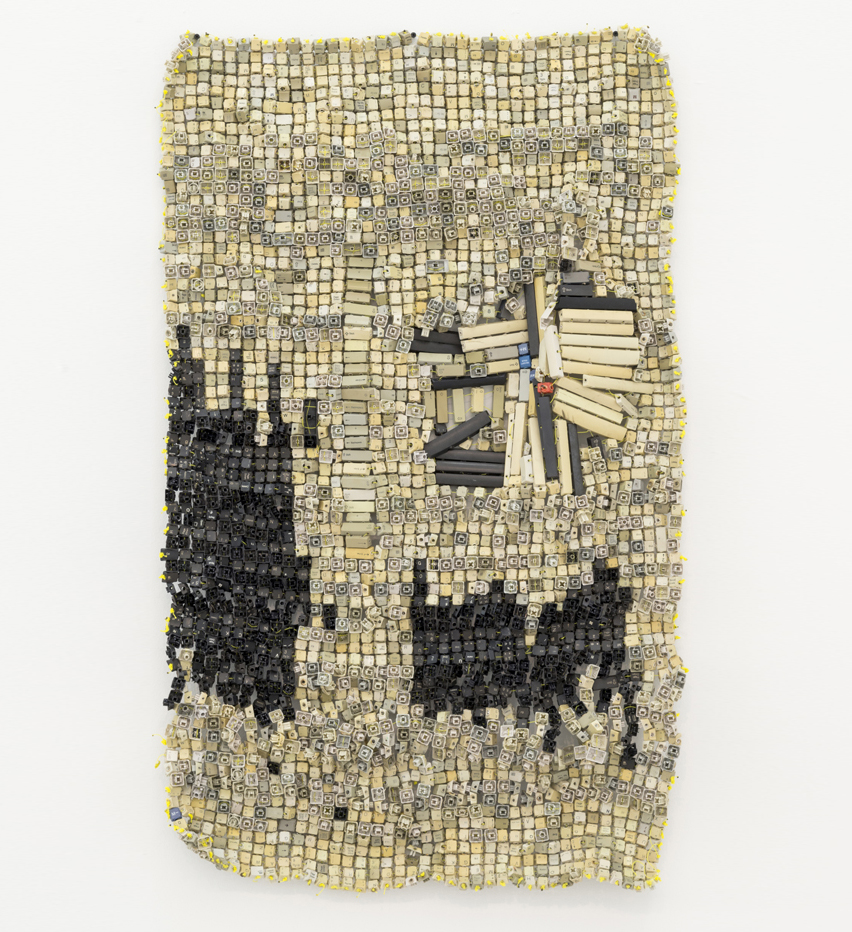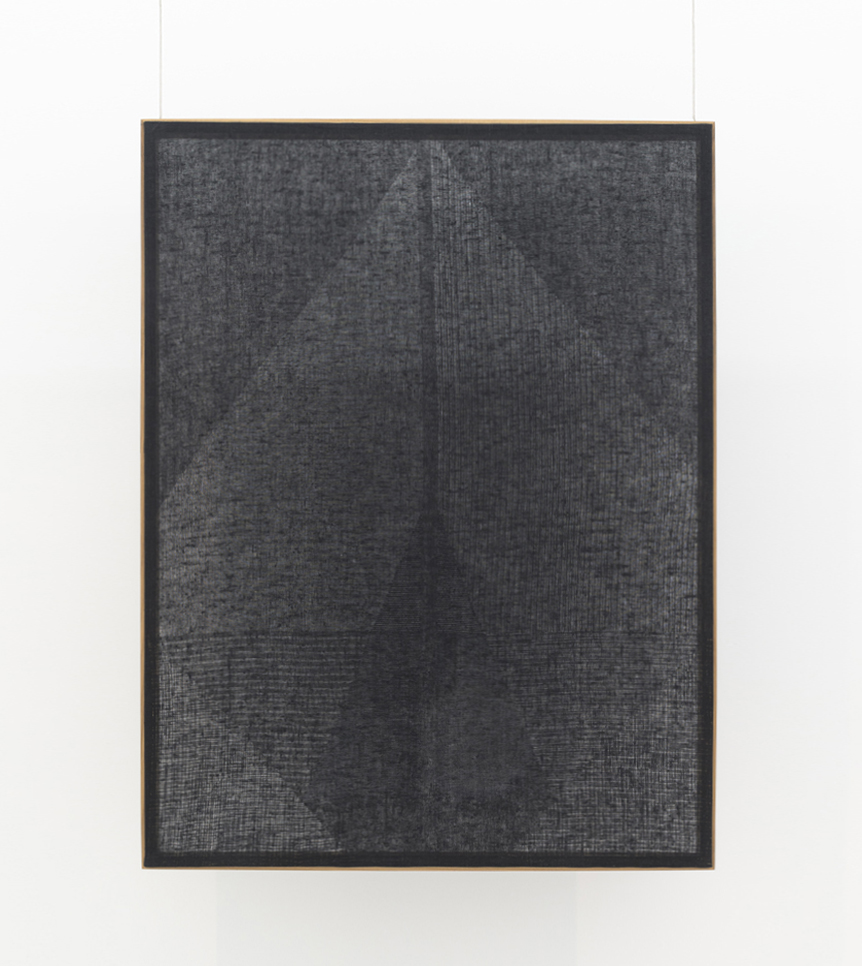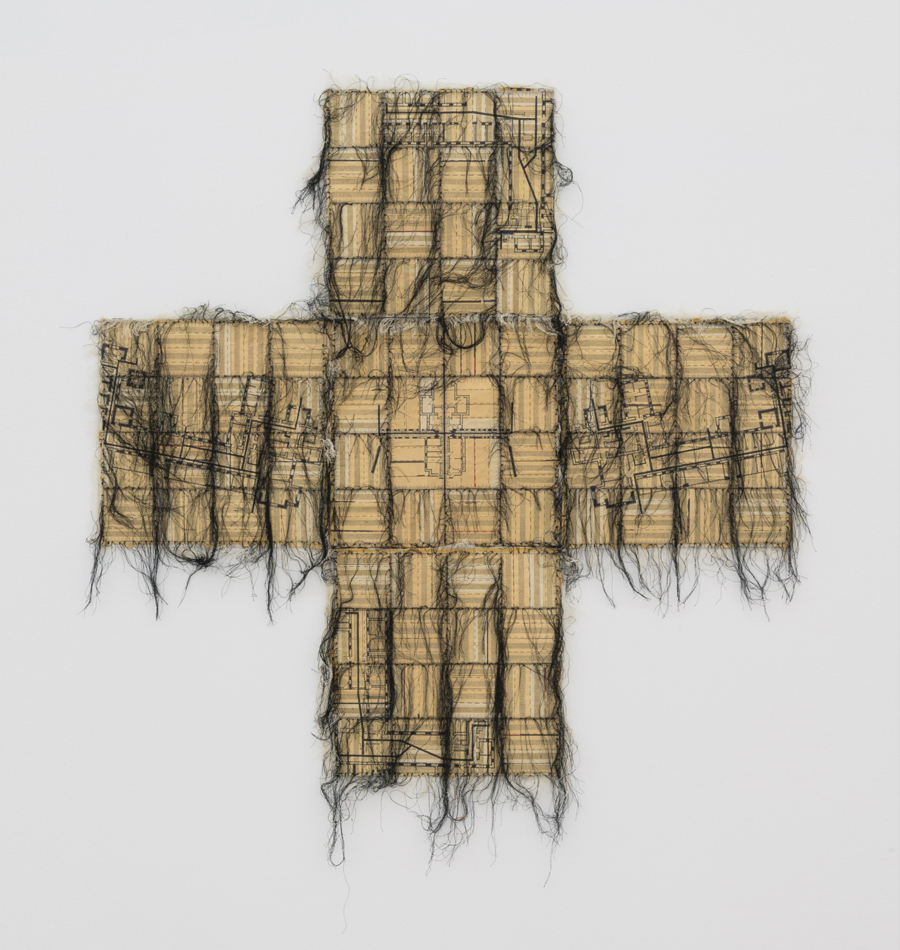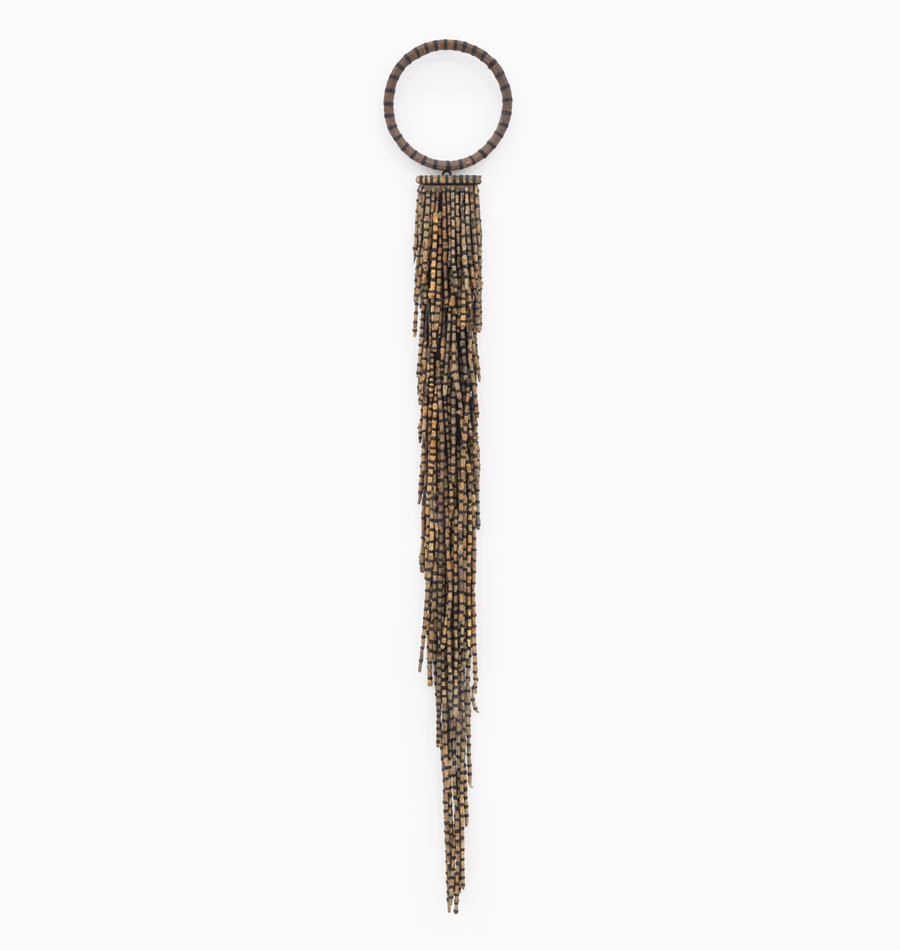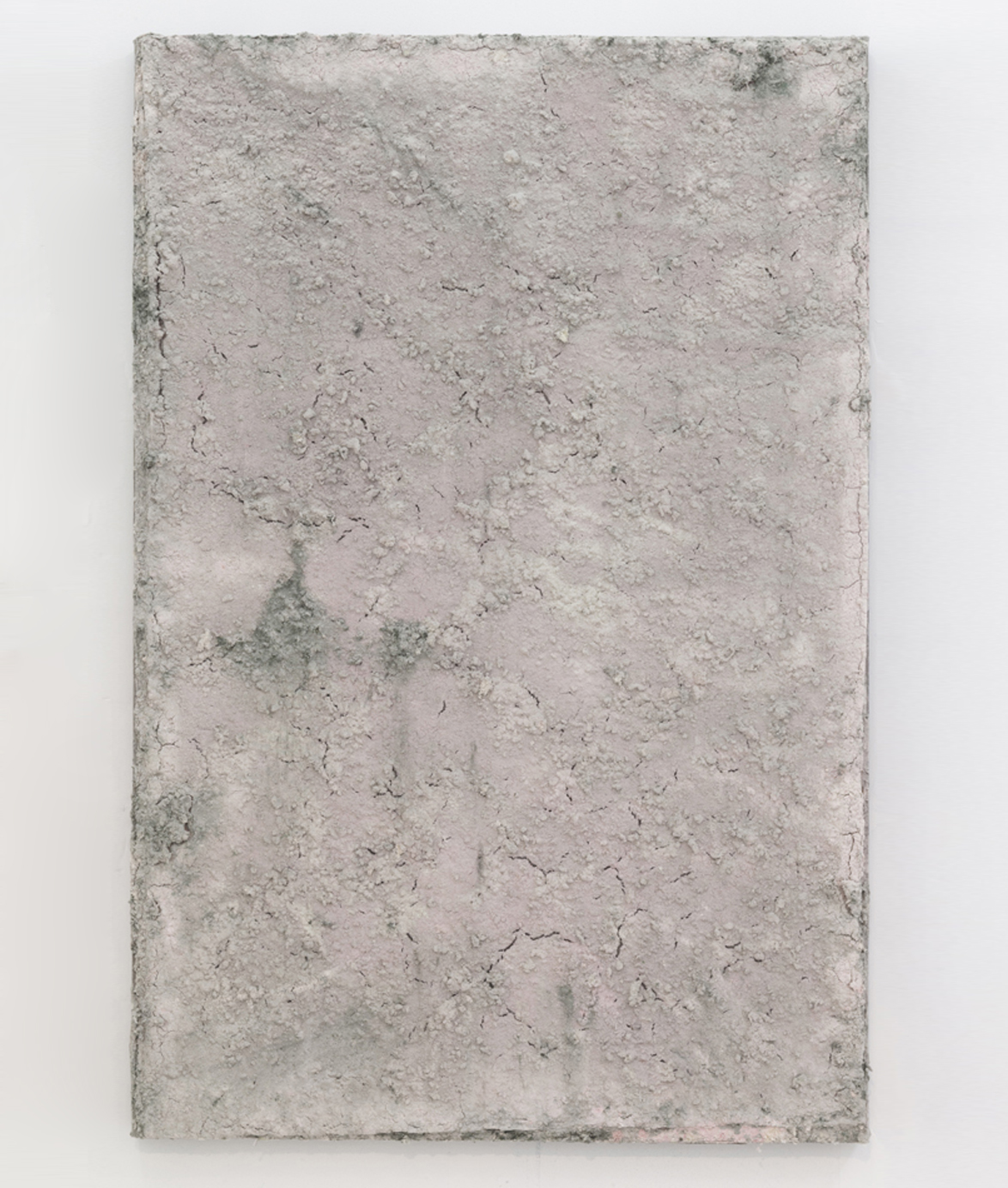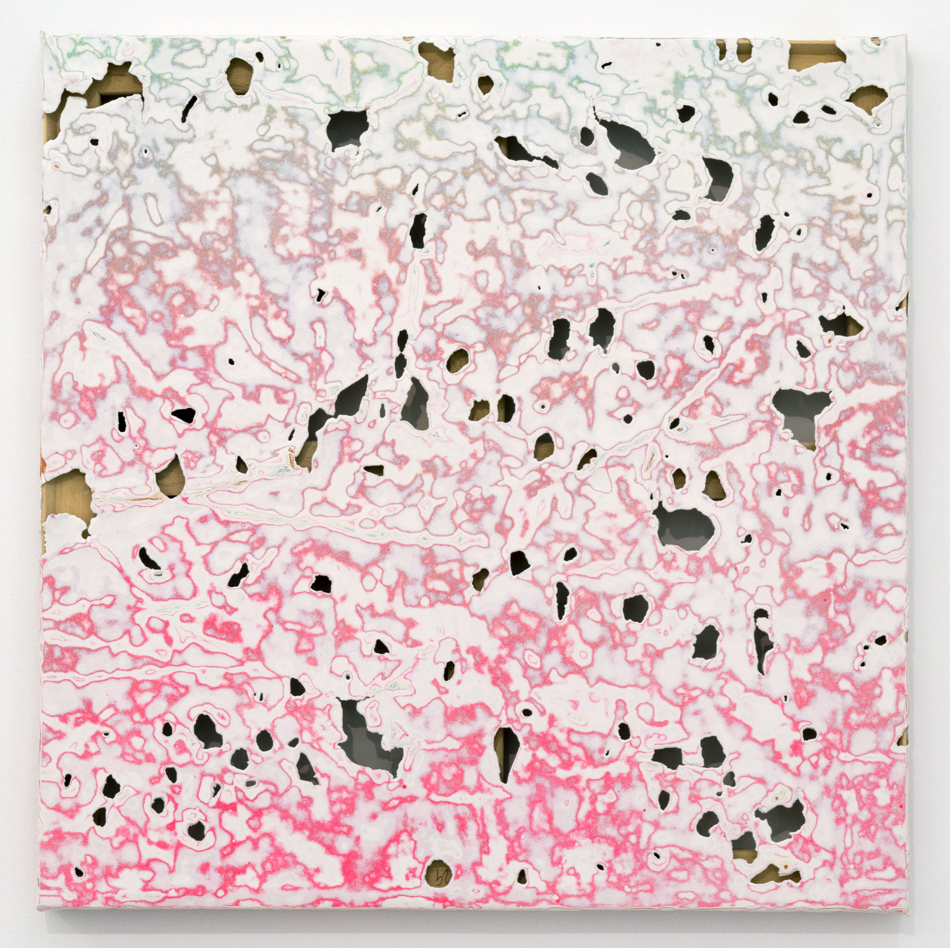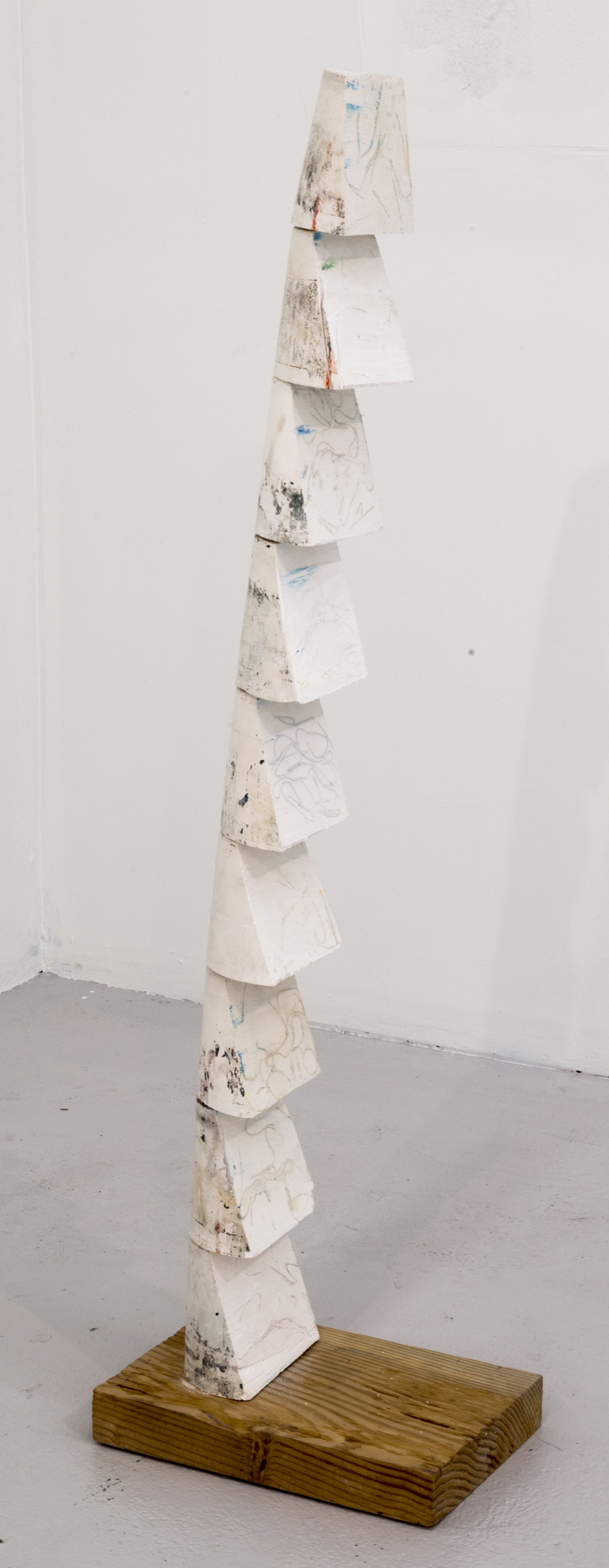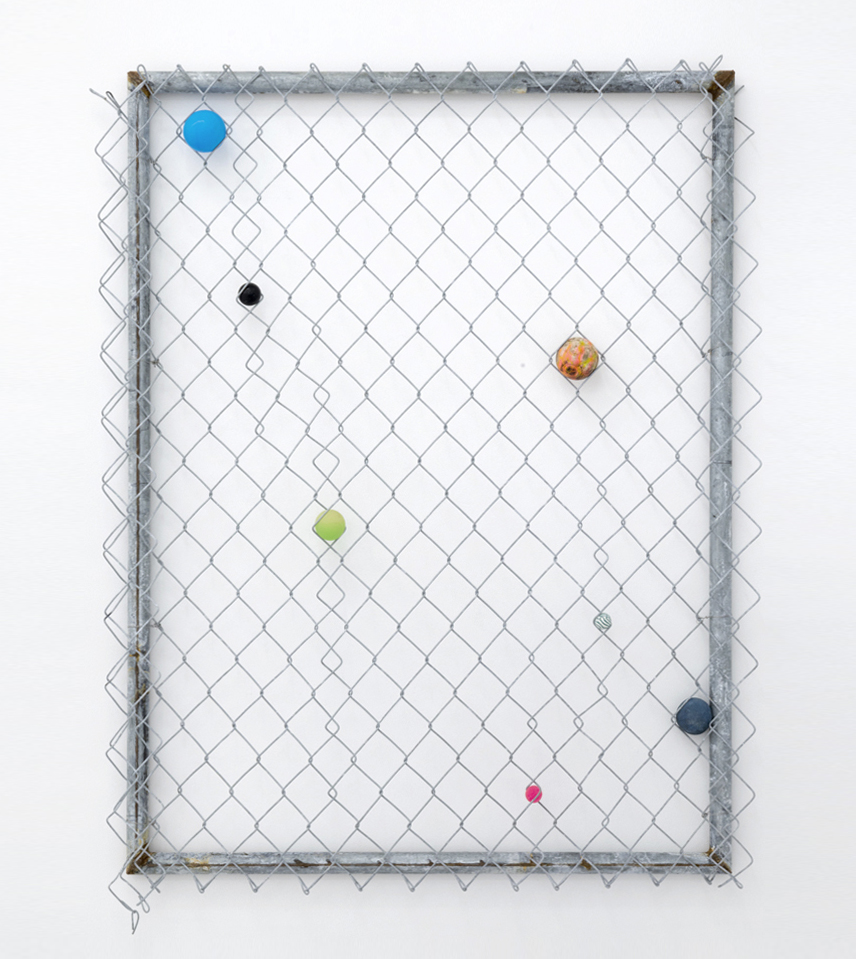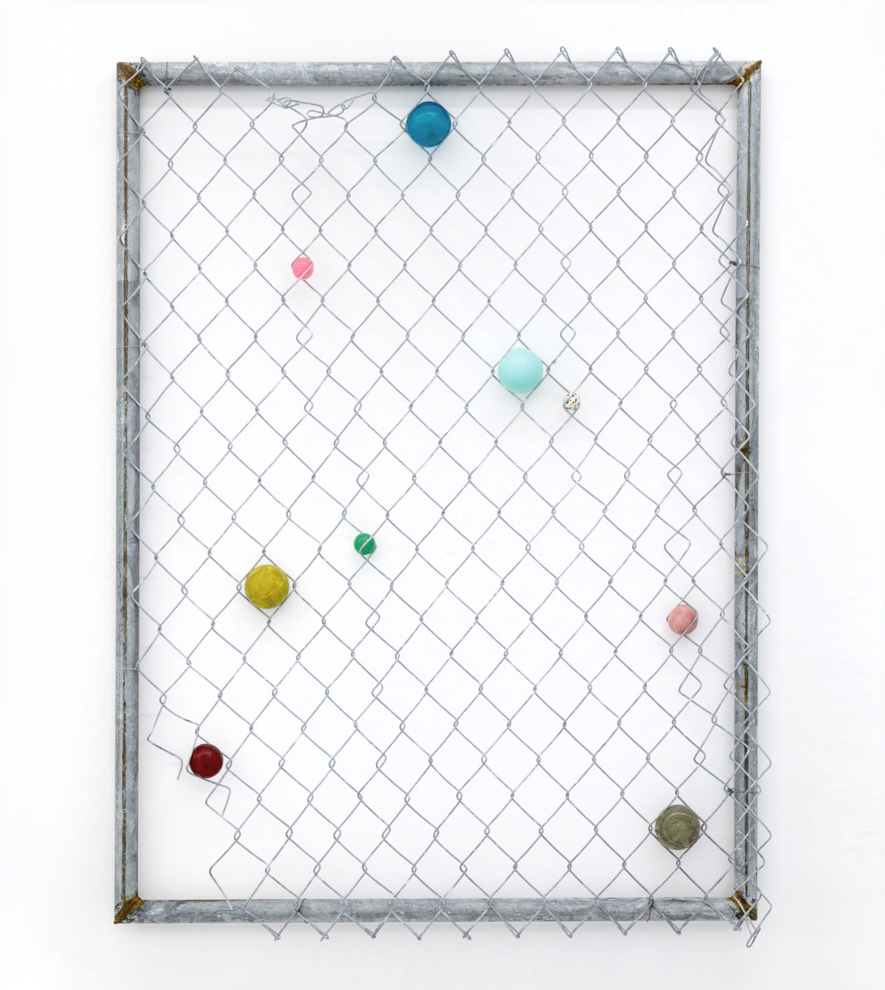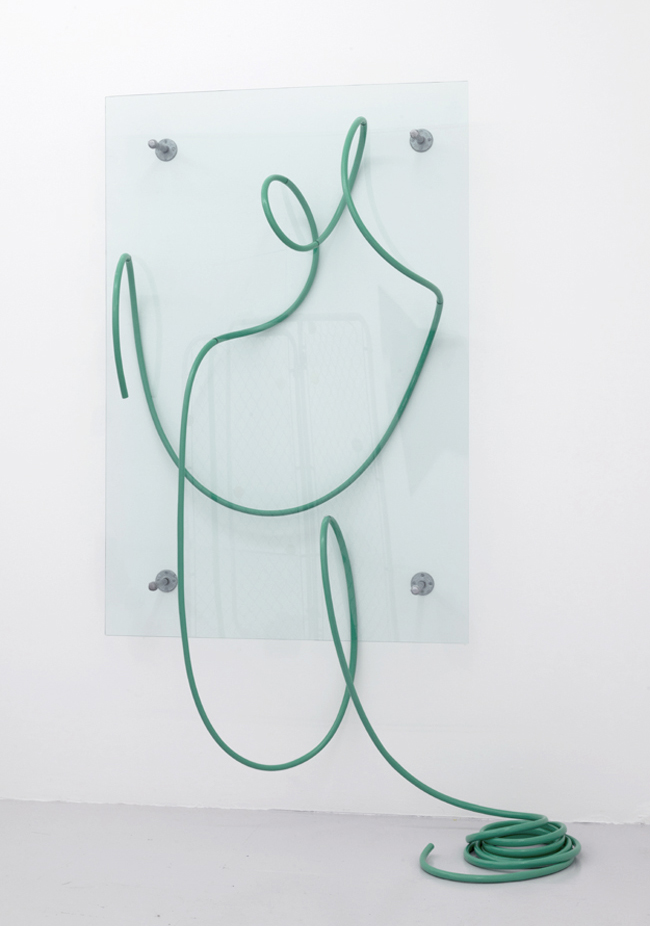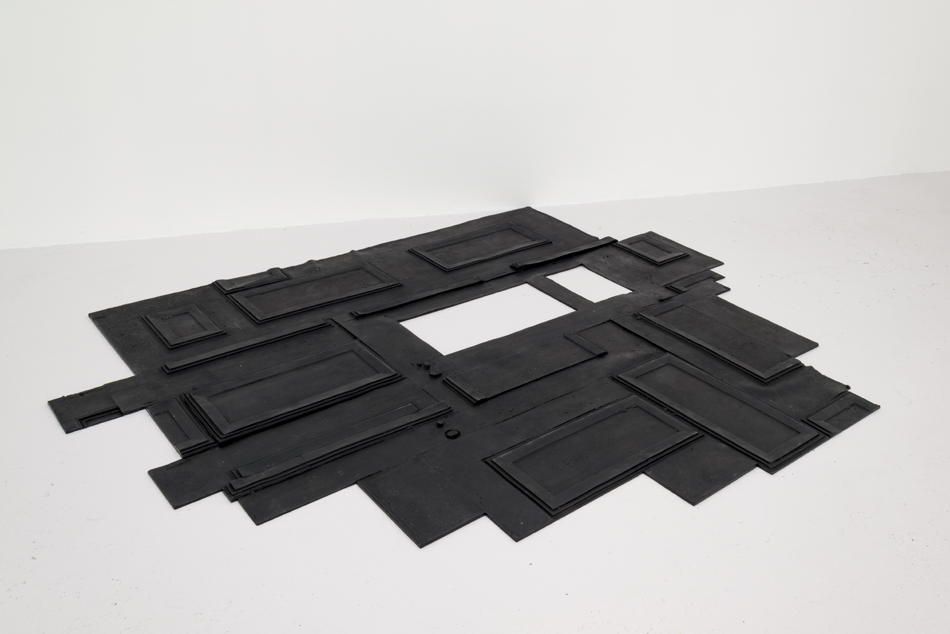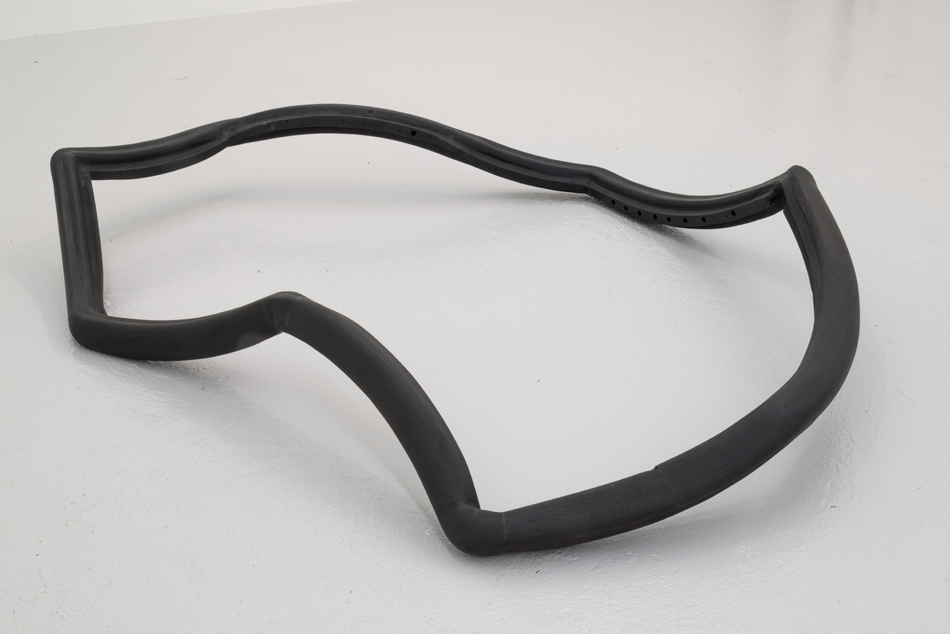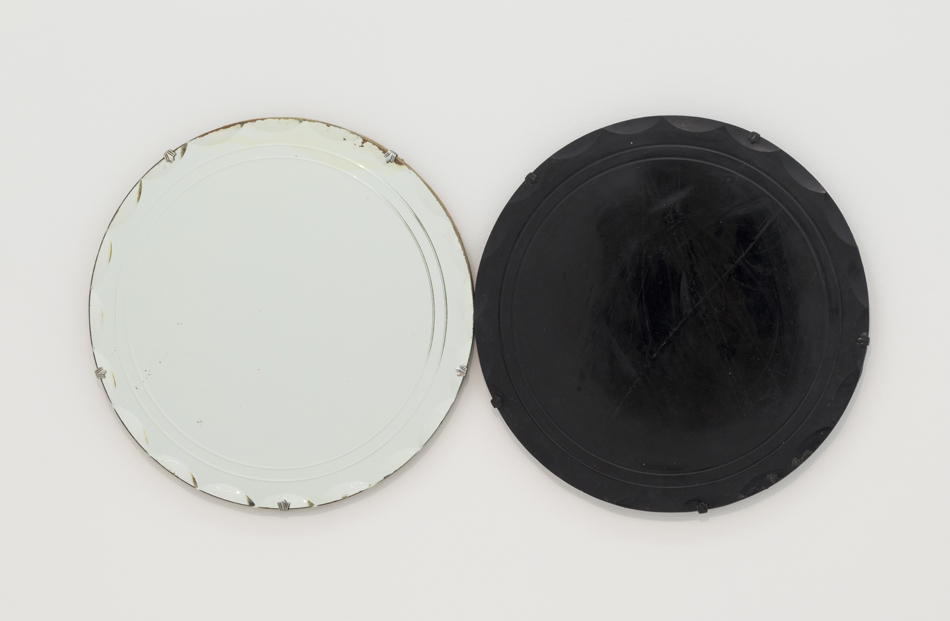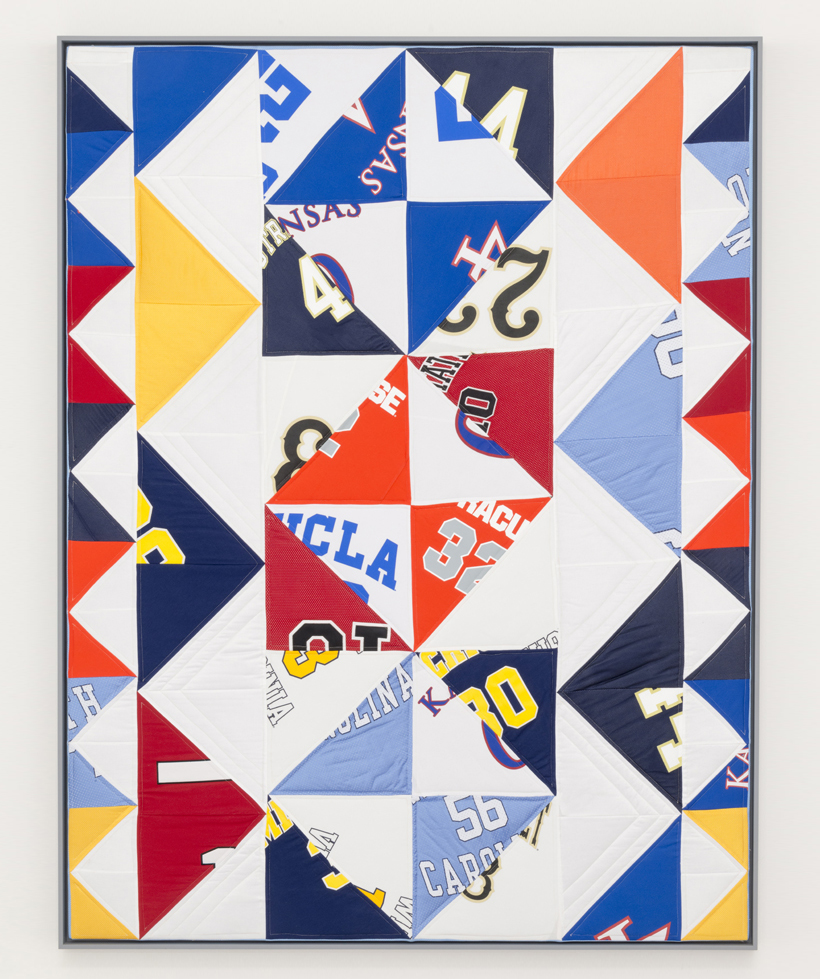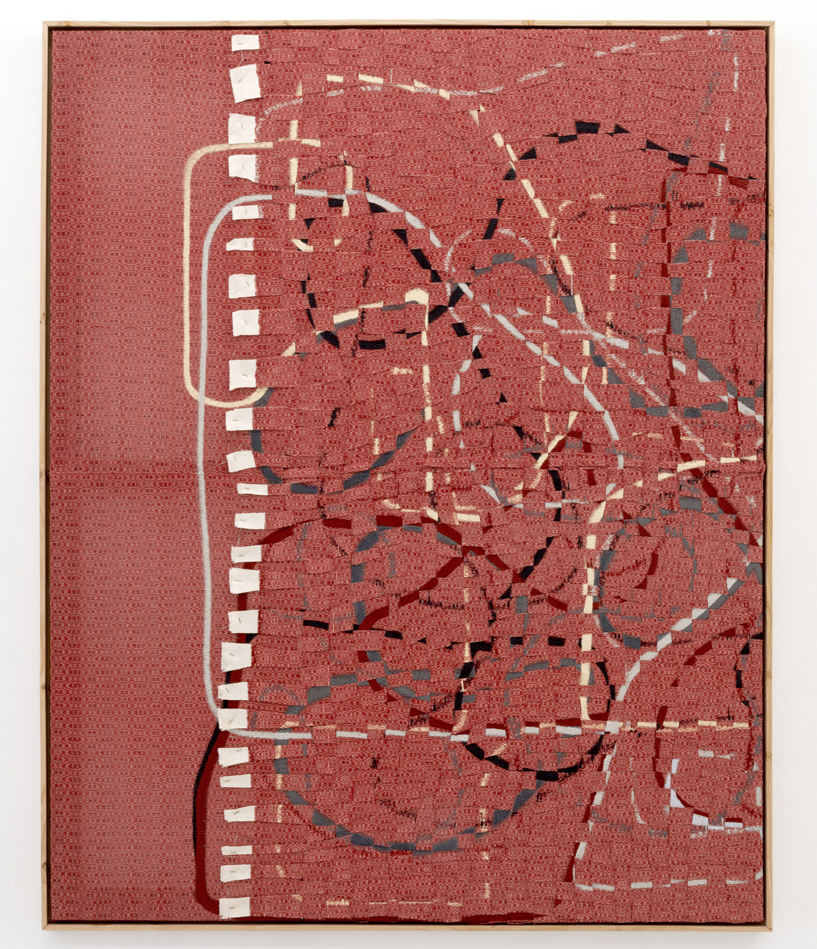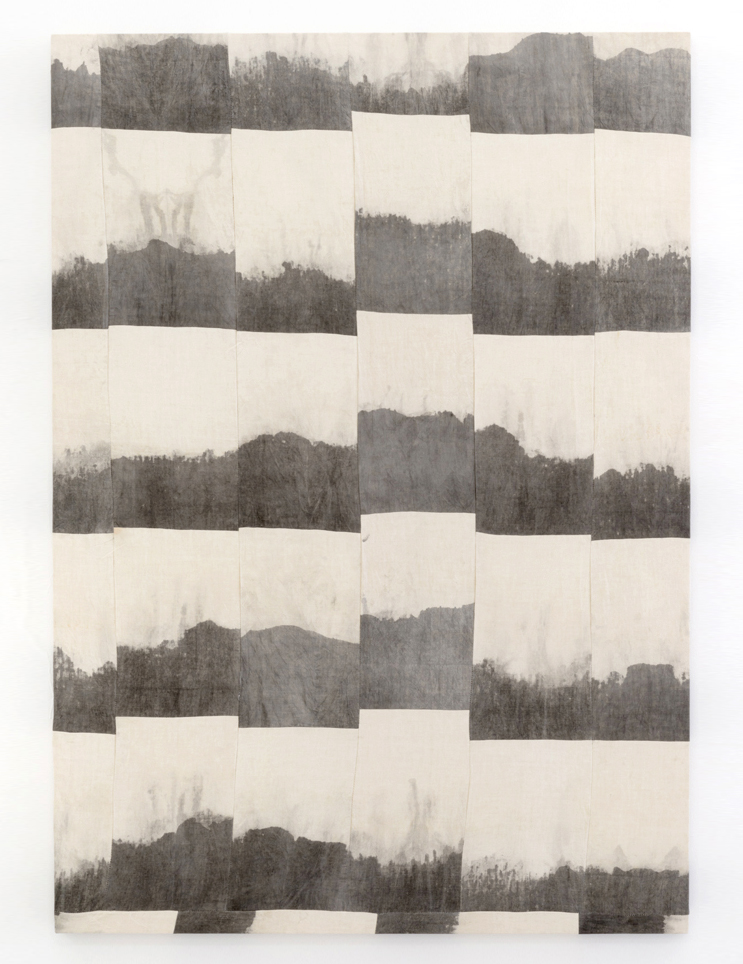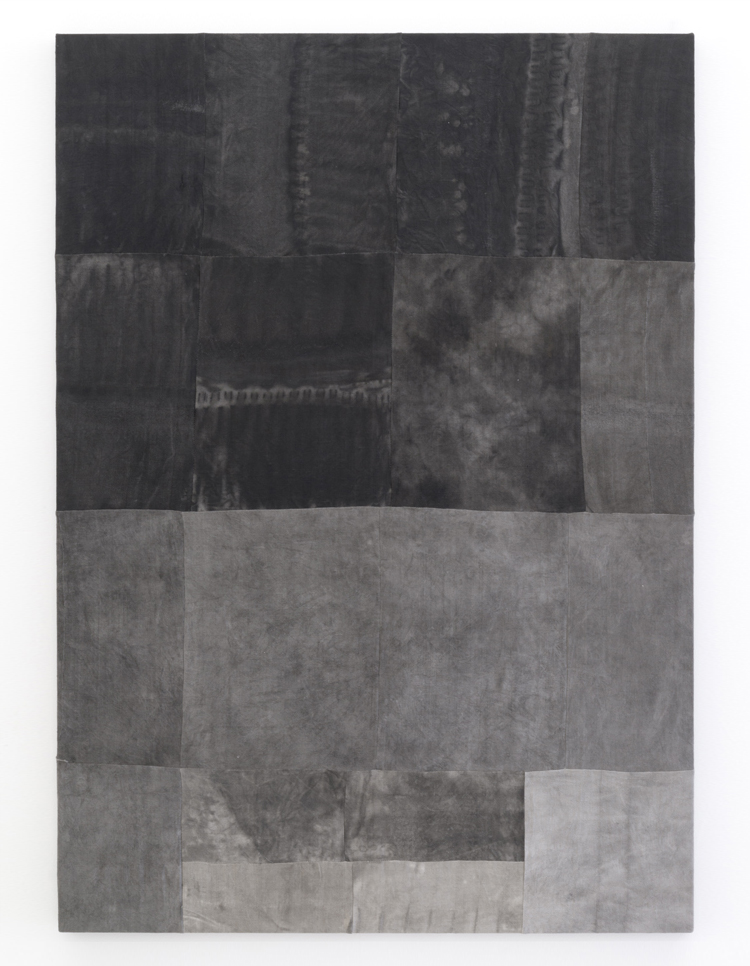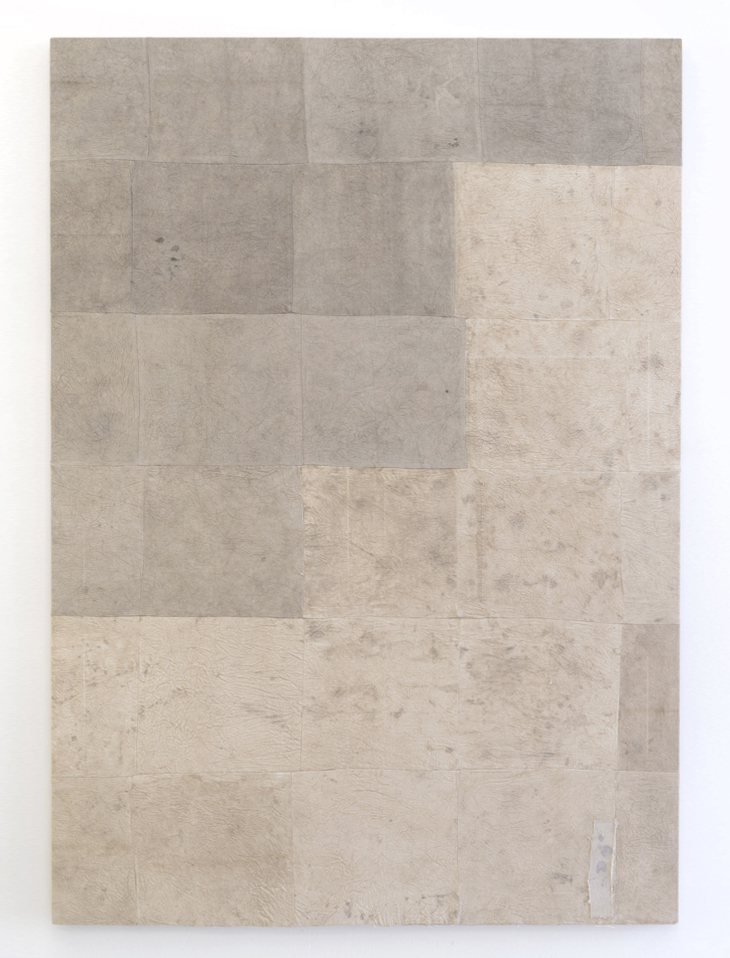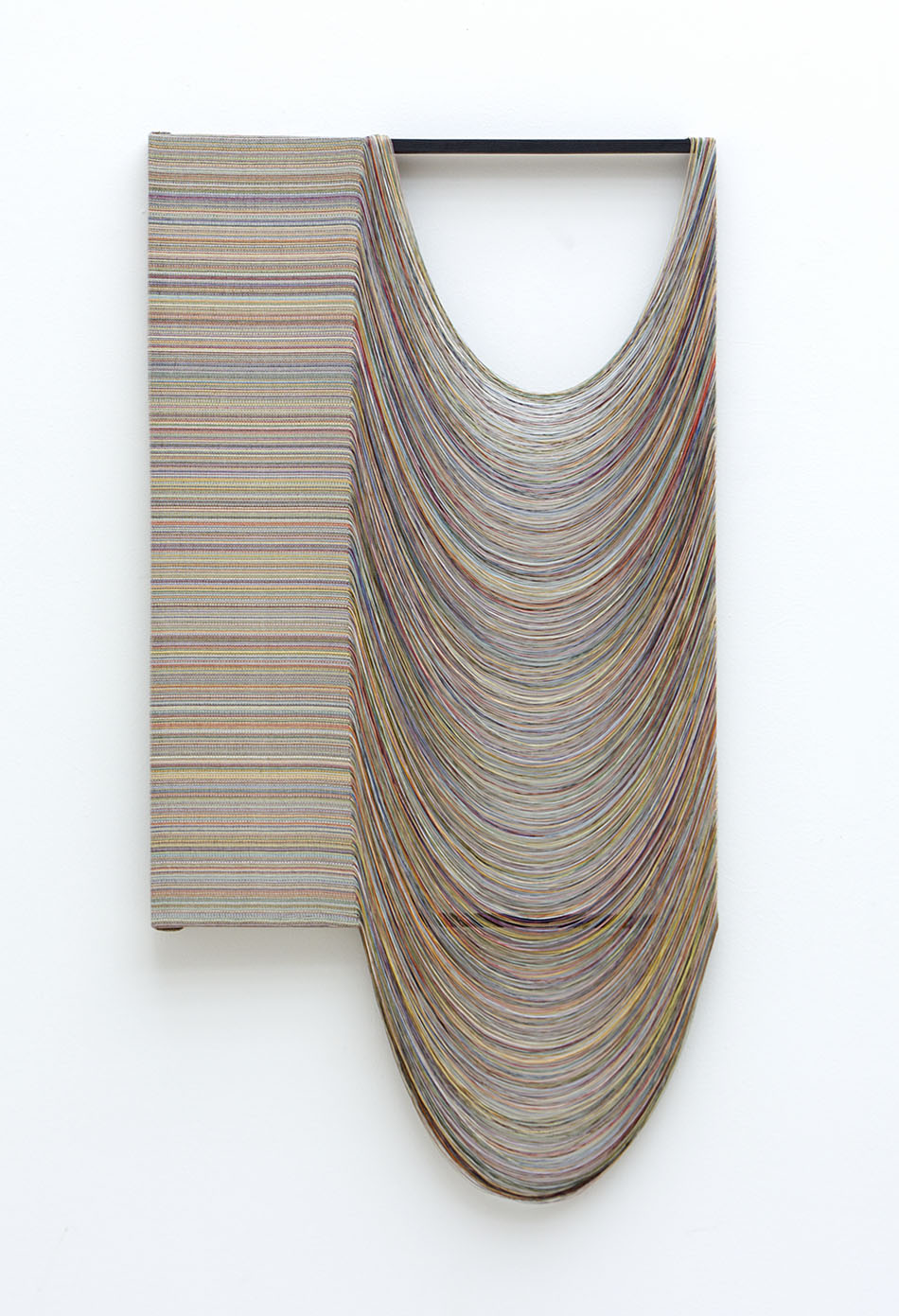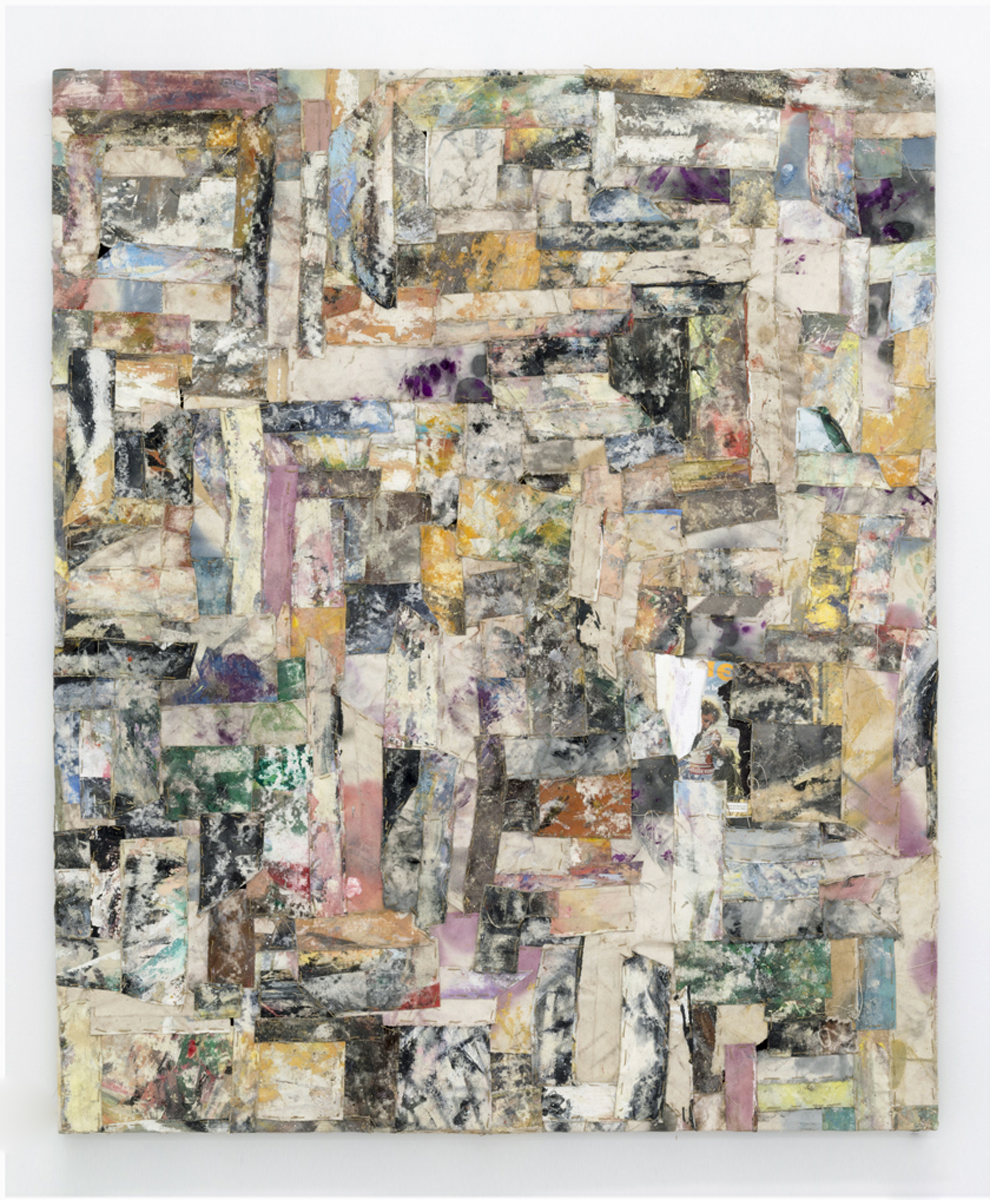Curated by Toby Clarke and Kathy Grayson
Featuring:
Alek O.
Ayan Farah
Evan Robarts
Gabriel Pionkowski
Graham Wilson
Hank Willis Thomas
Henry Krokatsis
Johnny Abrahams
Kadar Brock
Moffat Takadiwa
Nika Neelova
Penny Lamb
Shinique Smith
Tonico Lemos Auad
The Hole is proud to present our May exhibition utilizing our entire three galleries, Warp & Woof, curated by Toby Clarke and Kathy Grayson. Taking its title from the weaving terms “warp” (the vertical and static component of the weave) and “woof” (the dynamic and horizontal aspect of the weave), this exhibition looks at textile-driven abstraction across continents in emerging art.
Weaving is included in the show both literally (with woven works like the above piece by Gabriel Pionkowski where each thread of the canvas is de-threaded, painted, then rewoven over a pine wood frame) and metaphorically, as “warp and woof” can be interpreted as the underlying structure of any process or system. The artists in exhibition unravel the trite cliché of the “fabric” of life by taking a temporal and indeed systemically structured approach to abstraction favoring personal history, traces, residues and chance.
Ayan Farah, Kadar Brock, Graham Wilson and Alek O. all create process-driven abstraction that includes serendipitous destruction and creation operating within the systems they have created. Farah works with natural processes like light, heat, earth, wind and water to make “forensic” paintings without paint and composed by forces larger than the artist’s hand. Brock creates his own “ecosystem” of paint where works are scraped and sanded, paint is collected in chips or vacuumed as dust and reworked into the lifecycle of his paintings and sculpture. Lewis works in a similar recyclical structure where paintings are sliced, stripped and reconstituted as the artist responds to and drives forward a circular artistic process. Alek O. here exhibits a repatterned and oragami-esque stretched parasol bleached by the sun.
Evan Robarts, Shinique Smith and Hank Willis Thomas include found materials into their conceptual framework in a web of memory, history and cultural forces. The discarded balls woven into reclaimed fences from dog parks or back yards in Robarts work evokes a certain nostalgia in palette and ghost of past activity, while Willis Thomas’ quilted athletic jerseys juxtapose family and warmth with public contest and sweat. Smith will here exhibit one of her “bales” of discarded clothes and fabric assembled into a chaotic monolith of towering textiles.
Nika Neelova, Penny Lamb and Moffat Takadiwa use architectural ghosts to weave new artworks, as Lamb exhibits a sinister sewn-together floor plan of a mental institution and Neelova exhibits a Mobius strip of reclaimed bannisters from derelict buildings. Takadiwa exhibits a hand-sewn work of reclaimed computer keys from trashed computers into a strange topography of non-information. These artworks look at how architecture and memory take shape in our subconscious.
Using both found and cast materials, Henry Krokatsis creates work that conjoins separate but wholly interdependent elements. Here he shows a non-functional cast black rubber mirror form that holds geometry, austerity and a lack of gesture. This is cast from, and joined with, a found junk shop mirror that, by its nature, embraces arbitrariness, material history and the narrative reward of subject matter. The piece shows the interconnection of elements fundamentally embraced by minimalism with the qualities minimalism sought to eradicate.
Tonico Lemos Auad, Gabriel Pionkowski and Johnny Abrahams perhaps exhibit the most direct “weaverly” tendencies but each includes the destruction of the weave simultaneous to the order it provides: Lemos Auad makes his works by actually unthreading parts of the textile to make ghostly shapes of removed threads in his screen pieces, while Pionkowski as mentioned above begins by de-threading the canvas completely. Abrahams paints meticulous panel paintings of silk Moiré patterns that, in pushing the digital interjection of image-making in between the weave and the painting, creates and captures these eye-boggling visual disruptions in the fabric. These artists inject entropy and disruption into the fixed grid of the weave and pushes within the limiting “warp and woof” to make space for emotion and poetry.
This exhibition was curated by Toby Clarke and Kathy Grayson in collaboration. Toby Clarke is the owner of VIGO Gallery, London where he has presented recent solo exhibitions by Abrahams, Farah, Neelova and Brock.
For more information on each artist, images or press inquiries please contact Krysta@theholenyc.com
















